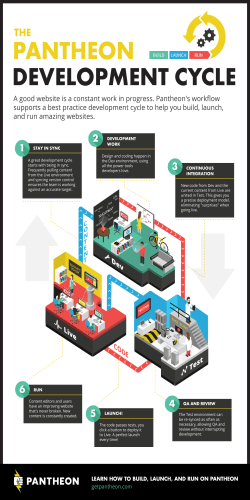
How to Interpret Shewhart Control Charts Control Chart Philosophy TCQF
How to Interpret Shewhart Control Charts TCQF October 9, 2012 David E. Stevens KPTWARE Control Chart Philosophy “There is no such thing as constancy in real life. There is, however, such a thing as a constant-cause system. The results produced by a constantcause system vary, and in fact may vary over a wide band or a narrow band. They vary, but they exhibit an important feature called stability. Why apply the terms constant and stability to a cause system that produces results that vary? Because the same percentage of these varying results continues to fall between any given pair of limits hour after hour, day after day, so long as the constant-cause system continues to operate. It is the distribution of results that is constant or stable. When a manufacturing process behaves like a constant-cause system, producing inspection results that exhibit stability, it is said to be in statistical control. The control chart will tell you whether your process is in statistical control.” W. E. Deming, “Some Principles Of The Shewhart Methods Of Quality Control”, Mechanical Engineering, Vol. 66, pp. 137-177, March 1944 Distribution Of BKLD Results From Constant-Cause System Distribution Characteristics Normal Dist. Mean: 8000 Std. Dev.: 100 Average 95% , + or - 2 Std. Dev. 99%, + or - 3 Std. Dev. Upper Control Limit, 3 Std. Dev. 8300 8200 Upper Warning Limit, 2 Std. Dev. Individuals Control Chart 8000 7800 7700 Target Lower Warning Limit, 2 Std. Dev. Lower Control Limit, 3 Std. Dev. Distribution Variation Monitoring BKLD 8009 8151 8094 7957 7999 7807 Two-Point Moving Range . 142 57 137 42 192 Range = Largest Value - Smaller Value Distribution Of Two Point Moving Range Two Point Moving Range Control Chart Upper Control Limit: 368.6 Target: 112.8 Lower Control Limit: 0 BKLD Control Chart Ways A Process Can Be Out Of Control Sustained, Average Shift, Constant Standard Deviation Irregular, Average Shifts, Constant Standard Deviation Constant Average, Change In Standard Deviation Trend Up Or Down In Averages, Constant Standard Deviation Irregular Changes In Average And Standard Deviation Sustained Shift in Population Mean with Constant Variation Irregular Shift in Population Mean with Constant Variation Steady Trend in Population Mean with Constant Variation Change in Variation With No Change in Population Mean Irregular Shifts in Population Mean and Variation Control Chart Rules: Bonnie Small (Others: Western Electric, AT&T) n n Individual/Mean Control Chart n A point exceeds either the upper or lower control chart limit n Two points between the upper or lower warning limit and the upper or lower control chart limit, respectively n Seven successive points are all on the same side of the target line Variation Control Chart n A point exceeds upper control limit n Points which are consistently above the target line indicate that the process capability has increased and that the Individual or Mean Control Chart limits are too narrow for the process n Points which are consistently below the target line indicate that the process capability has decreased and that the Individual or Mean Control Chart limits are too wide for the process Control Chart Simulator Demo Program available for FREE at www.kptware.com How Well Can A Control Chart Detect A Sustained Process Shift n Example using: n Subgroup Size of 1* n Subgroup Size of 5** n Western Electric Control Chart Rules Rule One: Any one point falls outside three-sigma control limits n Rule Two: Two out of three successive points are outside the two-sigma limits n Rule Three: Four out of five successive points are outside the one-sigma limits n Rule Four: Eight successive points on the same side of the center line n * Simulation by Jim Stuart, Eastman ** See Donald Wheeler Reference Subgroup Size of 1 Subgroup Size of 5 K is the number of sampling periods Table values are the probability of detecting a given shift Plotting Rare Event Data n Traditional Individual & Moving Range Chart n n Traditional Alternatives n n n n n Concern: Lower Limit below zero P Chart C Chart U Chart Concern: Large amount of data needed to establish accurate control limits New Charts in Minitab n G-Chart n n n Plots number of opportunities between rare event (Count Distribution) Based on Geometric distribution T-Chart n n Plots time between rare event (Continuous Distribution) Based on Weibull distribution Note: Charts need to be constructed on “Stable Process” IR Chart for OR Acquired Staph Infections This is simulated data from a stable process. Note LCL is below zero and the out-of-control points. G Chart for OR Acquired Staph Infections This is simulated data from a stable process. G Charts n When to Use n Known # opportunities between defects n No “floor” or “ceiling n Constant rate expected n Low Probability n Low to moderate volume n Chart Tests n 3-sigma n9 in a row n Benneyan (consecutive 0’s) See link to paper by Benneyan on construction of G Charts http://www1.coe.neu.edu/~benneyan/papers/g_chart_overview/ T Chart of Earthquakes in Washington State Data is time in days between event. T Charts n When to Use n Date/Time of (or between) defects known n No “floor” or “ceiling” n Constant rate expected n Low Probability n Low to moderate volume n Stable # opportunities over time n Chart Tests n 3-sigma n9 in a row References n n n n n n “Statistical Method from the Viewpoint of Quality Control”, Walter A. Shewhart (Edited and with a New Foreword by W. Edwards Deming), Dover Pub., 1986 “Statistical Quality Control”, Grant & Leavenworth, McGraw-Hill, 1980 “Quality Control and Industrial Statistics”, A. Duncan,Irwin, 1986 “Detecting a Shift in Process Average: Tables of the Power Function for Xbar Charts”, D. Wheeler, JQT, Vol. 15, No. 4, Oct. 1983 Minitab G and T Charts Google Search Internet
© Copyright 2025





















